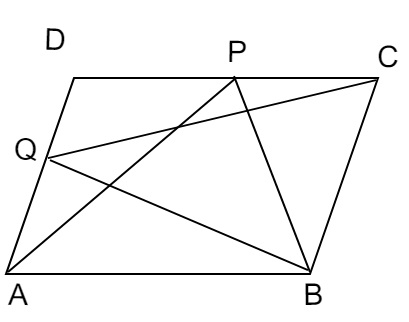
 Data Structure
Data Structure Networking
Networking RDBMS
RDBMS Operating System
Operating System Java
Java MS Excel
MS Excel iOS
iOS HTML
HTML CSS
CSS Android
Android Python
Python C Programming
C Programming C++
C++ C#
C# MongoDB
MongoDB MySQL
MySQL Javascript
Javascript PHP
PHPPhysics
Chemistry
Biology
Mathematics
English
Economics
Psychology
Social Studies
Fashion Studies
Legal Studies
- Selected Reading
- UPSC IAS Exams Notes
- Developer's Best Practices
- Questions and Answers
- Effective Resume Writing
- HR Interview Questions
- Computer Glossary
- Who is Who
P and $ Q $ are any two points lying on the sides $ D C $ and $ A D $ respectively of a parallelogram $ \mathrm{ABCD} $. Show that ar $ (\mathrm{APB})=\operatorname{ar}(\mathrm{BQC}) $.
Given:
$P$ and \( Q \) are any two points lying on the sides \( D C \) and \( A D \) respectively of a parallelogram \( \mathrm{ABCD} \).
To do:
We have to show that ar \( (\mathrm{APB})=\operatorname{ar}(\mathrm{BQC}) \).
Solution:

$\triangle APB$ and parallelogram $ABCD$ lie on the same base $AB$ and between the same parallels $AB$ and $DC$.
This implies,
$ar(\triangle APB) =\frac{1}{2}$ ar(parallelogram $ABCD$)........(i)
Similarly,
$\triangle BQC$ and parallelogram $ABCD$ lie on the same base $BC$ and between the same parallels $AD$ and $BC$.
This implies,
$ar(\triangle BQC) = \frac{1}{2}$ ar(parallelogram $ABCD$.............(ii)
From (i) and (ii), we get,
$ar(\triangle APB) = ar(\triangle BQC)$
Hence proved.

Advertisements

To Continue Learning Please Login